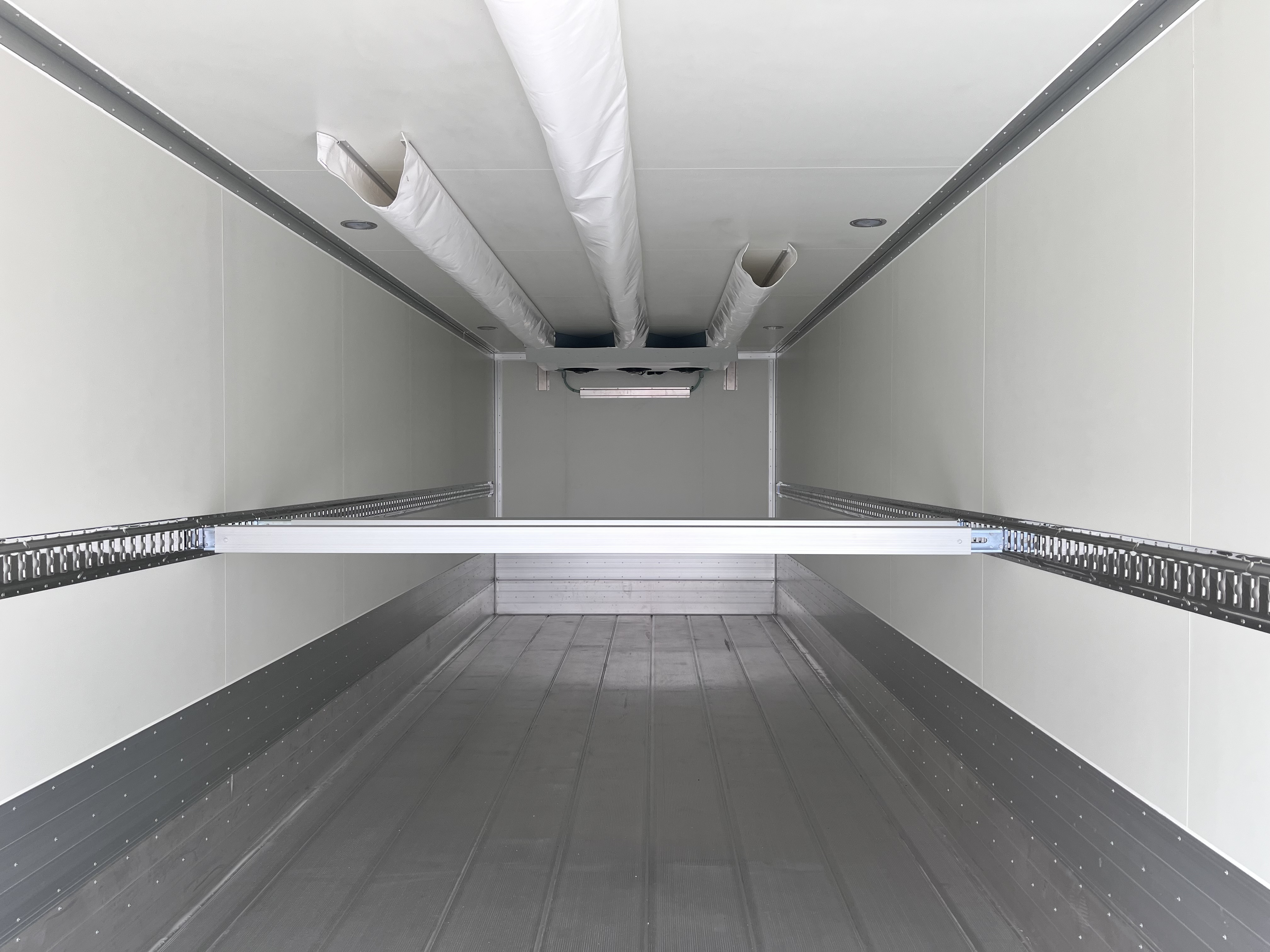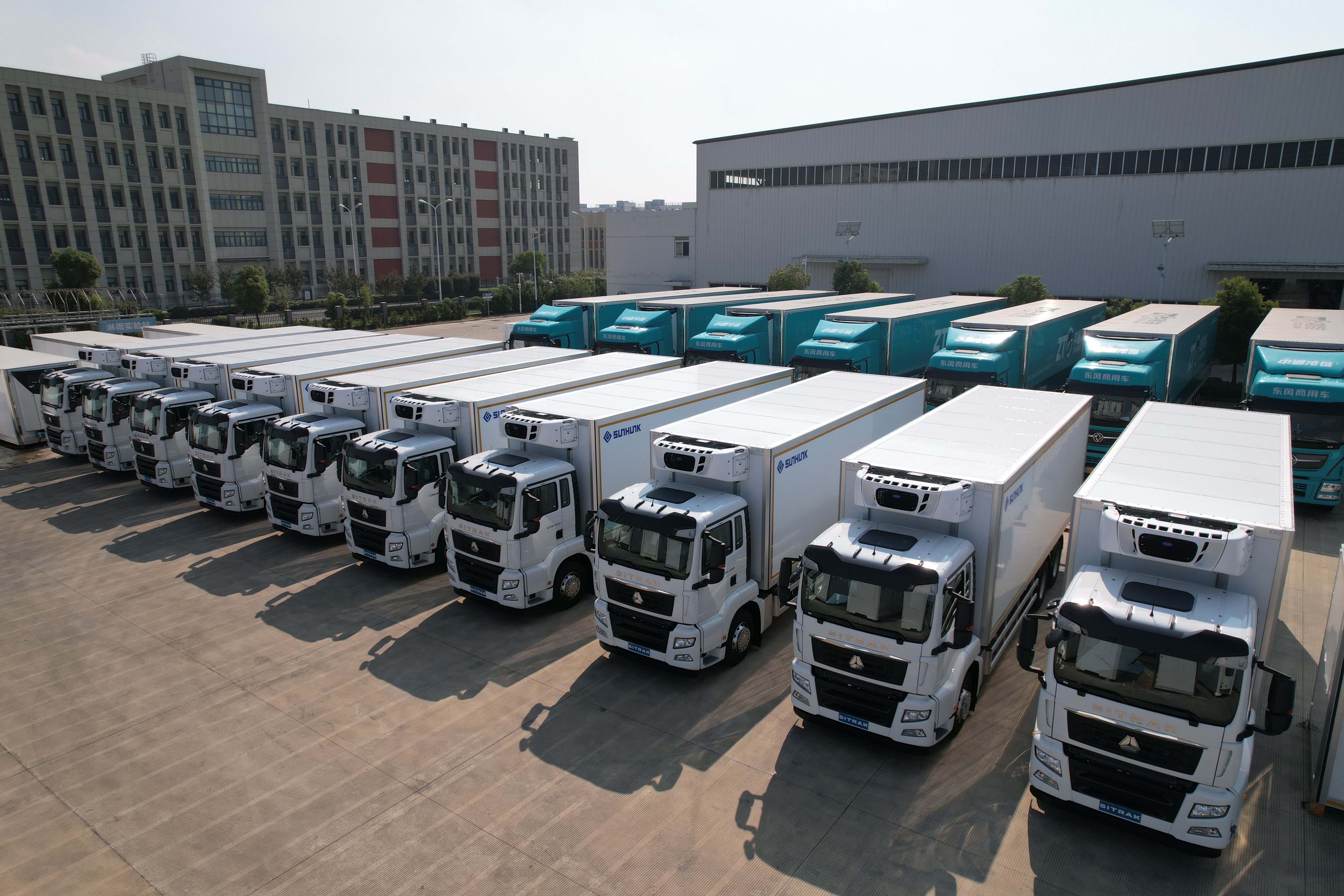- PRODUCTS
- SOLUTION
- SERVICE
- NEWS
- ABOUT US
Refrigeration system energy consumption is 30% higher in summer temperatures above 30°C and stricter insulation, more efficient cooling cycles are required to address this. The temperature control accuracy of summer and winter needs to be adjusted in autumn, the insulation protection measures for compartment should also take into account In addition to carrying out antifreeze operation on the system.
A 5°C increase in average spring temperature leads to a rise of some 15% in the maintenance requirements for refrigerated truck fleets. Spring temperature variations so peculiar require operators to mechanically alter the compartment inner temperature once every 5 minutes. In order to preserve the quality of the goods, controlled temperature accuracy of ±1°C is essential that will help in maintaining and prevent freezables from rotting away because they were exposed to fluctuating temperatures. A modest 5–10% of the total annual maintenance budget is set aside by some companies to improve on this score through software upgrades. The wireless communication of data allows the systems to automatically adjust refrigeration units in response to abrupt changes in temperature, bringing drastic improvements in efficiency compared with current manual adjustment methods.

The key to maintaining the operational efficiency of a system is regular inspections and replacements, at common intervals like every six hours for seals and least once per month in coolant. If the seals deteriorate, it can cause the refrigerant to leak out and hence affect temperature consistency in that part of compartment. Staying on top of the coolant level by checking it often and refilling as necessary will reduce the chances for potential problems in hot weather when it can be critical. In addition to allowing the fleet units' status quo, which also has a long-term role in summer transportation efficiency, maintenance at this seasonal time is key.
Summer is the most taxing season for refrigerated semi-trailers operation. An additional indirect operational cost for an appliance is its increased energy consumption of the refrigeration system by a minimum 30% when external temperatures are consistently above some threshold, e.g. 30 °C difference. Providing a low-temperature environment inside the compartment becomes important, because for every 1ºC raise in temperature, the failure rate of goods rises by 10%. The compartment can be thermally insulated to perform this. Through the use of some advanced technology in this sector, it has meant that there is greater insulation thickness to reduce heat transfer and using well chosen insulating materials can bring a reduction on the compartment temperature gain rate by more than 20%.
An intelligent control system can allow the refrigeration unit to start and stop at regular intervals, according to changes in external temperature so that energy consumption is managed effectively which leads to minimal unnecessary mechanical load. More advanced systems can even compensate by adjusting automatically when the ambient temperature increases more than 2°C, thus maintaining internal temperatures stable. This higher level of automation keeps optimal temperatures steady but commonly makes a 15% cut in how much energy the refrigerator uses. Be sure to inspect the cooling system regularly for leaks, check the coolant level and quality are good. For refrigerated vehicles, well-timed leak maintenance and repairing can make the saving percentage 25% higher than that of non-maintained units.
Please refrain from leaving your vehicles under strong sunlight for hours and to try pick a proper route spot or parking slot and shade or covered park-in when available. To accelerate the loading and unloading of goods is to reducehow longthe doors are open, if you canreduce 1 minites door opening time, internal temperature raising will drop by0.5°C.
In the fall, temperatures decrease by 10°C and refrigerated trucks generally consume about 20% less energy because of a chillier environment that relieves stress on the cooling system. Because the temperature ranges are unstable in this season, which causes a serious problem to change their refrigeration control system all with great frequency so that systems gets affected especially during large diurnal range changes.
Performing a detailed check of the system, such as checking insulation performance or confirming that no heat is being lost in your refrigeration system by testing sealing effectivity. Optimising seals and insulation can save 15% of total system efficiency, significantly impacting energy consumption. Checking the cooling system to make sure it has enough quality coolant will help prevent winter temperatures from affecting its ability to provide a cool cabin. Maintenance records from the industry agree in saying changing out coolant at its proper interval can help prolong refrigeration equipment lifespan while reducing expensive emergency costs.
Autumn vehicle maintenance can not only include the overall mechanical condition of tires, braking systems and also lighting equipment. The importance of the state of tired is even more vital during autumn as good grip on wet road means safer driving; just noting that many traffic accidents could have been avoided by properly maintained tyres, up to 30% according to different studies. Autumn is also a good time to make long-term journey plans for winter months about detailed route and scheduling as with potential extreme low degrees (even 5-10℃ in daytimes) adverse weather conditions may cause delays even early spring, beginning of warmth. These strategies, planned way ahead in autumn can boost the weather-adverseness of transport during winter as much by 20%.
When the temperature has drops to -10°C, heat is lost through wind and convection by up to 25%, which makes it necessary for energy consumption of the refrigeration system rise correspondingly in order to fight against external cold. Extra insulation material and efficient technique of insulating are the best ways to handle a cold winter. Appropriate enhanced insulation methods can save up to 30% of heat loss, thus reducing the workload pressure for AC unit operation and life extension.

Diagnosing and swapping out worn seals can provide a strong defense against cold drafty air, roughly 20 percent more thermal efficiency. All fluids within the system, including switching to cold-weather lubricants and anti-freeze coolants can prevent freezing issues in less than optimal temperatures as well promote general overall smooth operation of a weatherized-strategic-system. In winter, drivers should also pay more attention to the road ahead. Appropriate driving measures for ice and snow, ample following distance or speed between vehicles ('distance momentum'), and winter tires are among the safety recommendations. Well-designed winter driving training and preparation can drop automotive accident rates by nearly half.